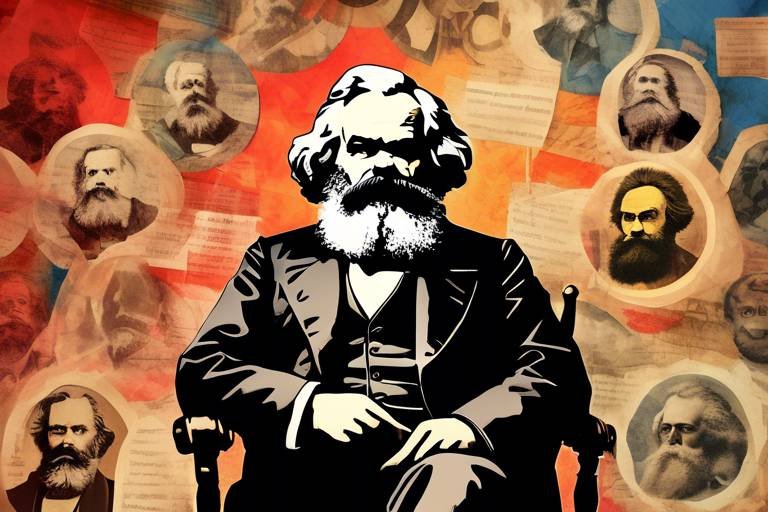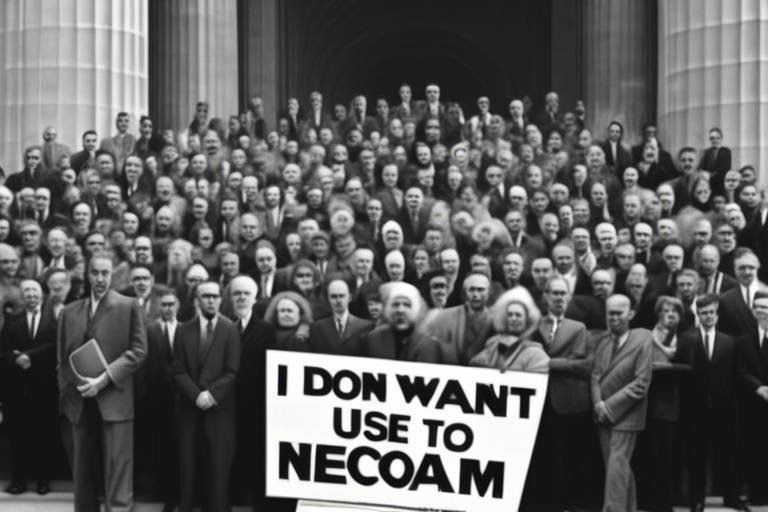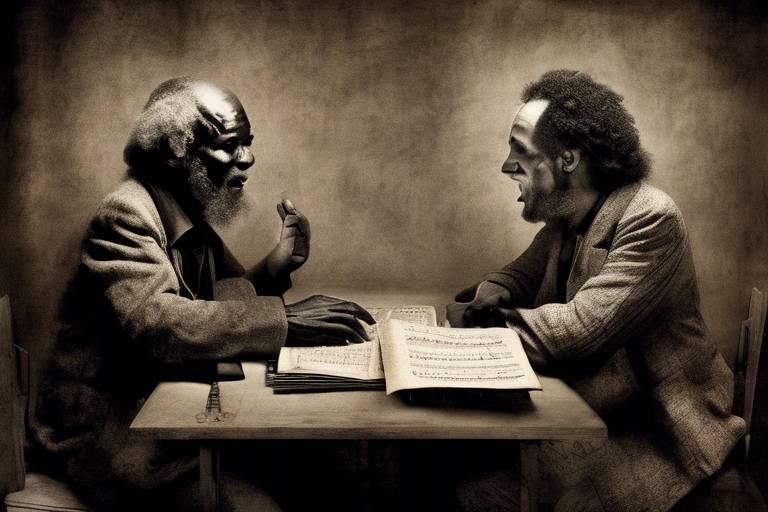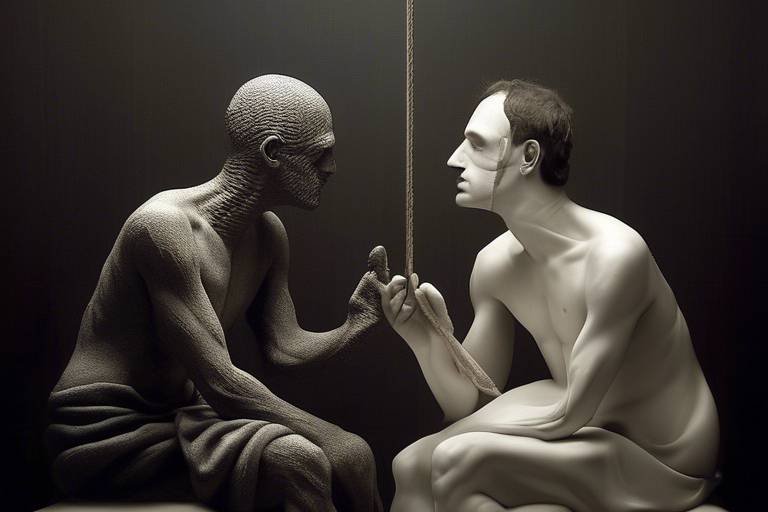An Overview of Marx's Historical Materialism
This article explores the key concepts of Marx's historical materialism, its implications for understanding history, and its relevance in contemporary society. At its core, historical materialism is a framework developed by Karl Marx that posits that the material conditions of a society—its economic structures, technologies, and resources—are the primary drivers of historical development. This perspective starkly contrasts with idealist philosophies that prioritize ideas and consciousness as the main forces shaping human history.
Imagine history as a vast river, where the currents are shaped not by the whims of individual will but by the rocks and banks that define its course. In this metaphor, the rocks represent the material conditions—like the economy, technology, and environment—that influence how societies evolve. As these conditions change, so too does the flow of history, leading to different social structures and relationships. This approach provides a powerful lens through which we can analyze past events and understand societal transformations, revealing the underlying economic and social forces at play.
One of the most fascinating aspects of historical materialism is its emphasis on the relationship between the forces of production and the relations of production. The forces of production include the means of production—such as tools, factories, and labor power—while the relations of production encompass the social relationships that arise from economic activity. For instance, in a capitalist society, the relationship between the bourgeoisie (owners of production) and the proletariat (workers) is fundamental to understanding class dynamics and societal conflicts.
As we delve deeper into Marx's theory, we find that historical materialism is not merely a historical analysis tool; it is also a call to action. By understanding the material basis of society, individuals and groups can identify the root causes of social injustices and work towards transformative change. This is particularly relevant today, as we face numerous challenges—economic inequality, social unrest, and environmental crises—that can be better understood through the lens of historical materialism.
To further illustrate the relevance of historical materialism, consider its implications for modern social movements. Many contemporary movements—ranging from labor rights to environmental justice—reflect the principles of class struggle and the quest for equitable distribution of resources. As we explore these themes in the following sections, we will uncover how Marx's insights continue to resonate in our current socio-economic landscape.
- What is historical materialism? Historical materialism is a framework developed by Karl Marx that emphasizes the role of material conditions in shaping societal development and historical change.
- How does historical materialism differ from idealism? Unlike idealism, which prioritizes ideas and consciousness, historical materialism focuses on the economic and material factors that influence history.
- Why is historical materialism relevant today? It provides insights into contemporary social issues, helping us understand economic inequalities and the dynamics of class struggle in modern society.

The Foundations of Historical Materialism
Historical materialism is a foundational concept in Marxist theory, rooted in the belief that material conditions—the economic and social structures of society—shape human history and societal development. Unlike idealist perspectives that prioritize ideas and consciousness as the primary drivers of historical change, historical materialism posits that it is the tangible, material aspects of life that ultimately influence human behavior and societal evolution. This approach emphasizes the importance of economic factors as the bedrock upon which societies are built and transformed.
At its core, historical materialism suggests that the way goods are produced and distributed in a society determines the relationships between individuals and social classes. This means that the economic base of society influences the ideological superstructure, which includes culture, politics, and law. For instance, the capitalist mode of production fosters specific social relations and ideologies that justify and perpetuate the existing economic system. This is a stark contrast to idealist theories, which argue that ideas and beliefs shape material conditions. In essence, Marx's historical materialism flips the script: instead of ideas leading to action, it is the material realities of life that give rise to ideas.
To better understand this, consider the following key points:
- The material conditions of a society include its economic structures, technology, and the means of production.
- These conditions shape the social relations among people, defining class structures and power dynamics.
- The ideological superstructure—comprising culture, politics, and law—arises from and reflects the material base, serving to maintain the status quo.
Moreover, historical materialism is not merely a static analysis; it is inherently dynamic. It recognizes that as material conditions evolve—whether through technological advancements, changes in labor relations, or shifts in production methods—so too do the social relations and ideological frameworks. For instance, the transition from feudalism to capitalism did not occur overnight but was a complex process influenced by various material factors, including changes in agricultural practices and the rise of trade. This dynamic nature of historical materialism allows for a comprehensive understanding of historical change, emphasizing the importance of class struggle as a driving force behind societal transformations.
In summary, the foundations of historical materialism rest on the understanding that material conditions shape human history, providing a framework for analyzing the interconnectedness of economics, class relations, and ideology. This perspective not only challenges traditional idealist views but also offers a robust tool for examining the complexities of societal change throughout history.

When diving into Marx's historical materialism, it's essential to grasp the fundamental concepts that underpin this revolutionary framework. At its core, historical materialism is about understanding how material conditions—such as economic structures and class relations—shape human society and its development over time. It’s like looking at history through a lens that focuses on the tangible realities of life, rather than just ideas and beliefs. This approach contrasts sharply with idealist perspectives, which prioritize thoughts and consciousness over the material conditions that give rise to them.
One of the key concepts is the modes of production, which refers to the various ways societies organize their economic activities. These modes are not just about how goods are produced; they also reflect the social relationships that emerge from these economic systems. For instance, in a feudal society, the mode of production is characterized by a rigid hierarchy where lords own the land and serfs work it. In contrast, capitalism introduces a different dynamic, where the means of production are privately owned, and the workforce sells its labor for wages. Understanding these modes is crucial for analyzing how societies evolve and the conflicts that arise from these economic structures.
To further illustrate this, let’s break down the two significant modes of production: feudalism and capitalism. Feudalism can be likened to a well-structured pyramid, where power and resources are concentrated at the top, while the vast majority toil at the bottom. The lords possess land and wield authority, while serfs are bound to the land, often with little hope for upward mobility. On the other hand, capitalism resembles a bustling marketplace where competition reigns. Here, the bourgeoisie (the capital-owning class) seeks profit, while the proletariat (the working class) must navigate the challenges of wage labor. This transition from feudalism to capitalism was not merely a change in economic systems; it represented a profound shift in social relations.
The characteristics of these modes of production highlight their impacts on social structures. In feudalism, loyalty and obligation defined relationships, whereas capitalism promotes individualism and competition. The social fabric of society is thus woven differently, affecting everything from politics to culture. The table below summarizes the key differences:
| Aspect | Feudalism | Capitalism |
|---|---|---|
| Ownership | Land owned by lords | Means of production owned privately |
| Social Structure | Rigid hierarchy | Fluid class structure |
| Labor | Serfdom and obligation | Wage labor and freedom |
| Economic Motivation | Subsistence | Profit maximization |
As societies transitioned from capitalism, new modes of production emerged, notably socialism and communism. These systems are often viewed as responses to the inequalities generated by capitalism. Socialism advocates for collective ownership of the means of production, aiming to reduce class disparities and ensure that the wealth generated benefits all members of society. Communism takes this a step further, envisioning a classless society where the state eventually withers away, and resources are distributed according to need rather than profit. Understanding these concepts is crucial as they frame the ongoing debates about economic systems and social justice in today's world.
Central to historical materialism is the concept of class struggle. This idea posits that history is marked by conflicts between different social classes, each vying for power and resources. The tension between the bourgeoisie and the proletariat is a prime example of this struggle, as the former seeks to maintain its wealth and dominance, while the latter fights for better wages and working conditions. This ongoing battle is not just a historical phenomenon; it continues to shape our contemporary society, influencing everything from labor rights movements to political ideologies.
In conclusion, the key concepts of historical materialism provide a robust framework for understanding the complexities of societal development. By focusing on material conditions, modes of production, and class struggle, we can gain deeper insights into the forces that shape our world today.
- What is historical materialism? Historical materialism is a framework developed by Karl Marx that emphasizes the role of material conditions in shaping societal development and history.
- How does historical materialism differ from idealism? Unlike idealism, which prioritizes ideas and consciousness, historical materialism focuses on economic structures and class relations as the driving forces behind historical change.
- What are the modes of production? Modes of production refer to the various ways societies organize their economic activities, including feudalism, capitalism, socialism, and communism.
- Why is class struggle important? Class struggle highlights the conflicts between different social classes, which are essential for understanding historical and contemporary social dynamics.
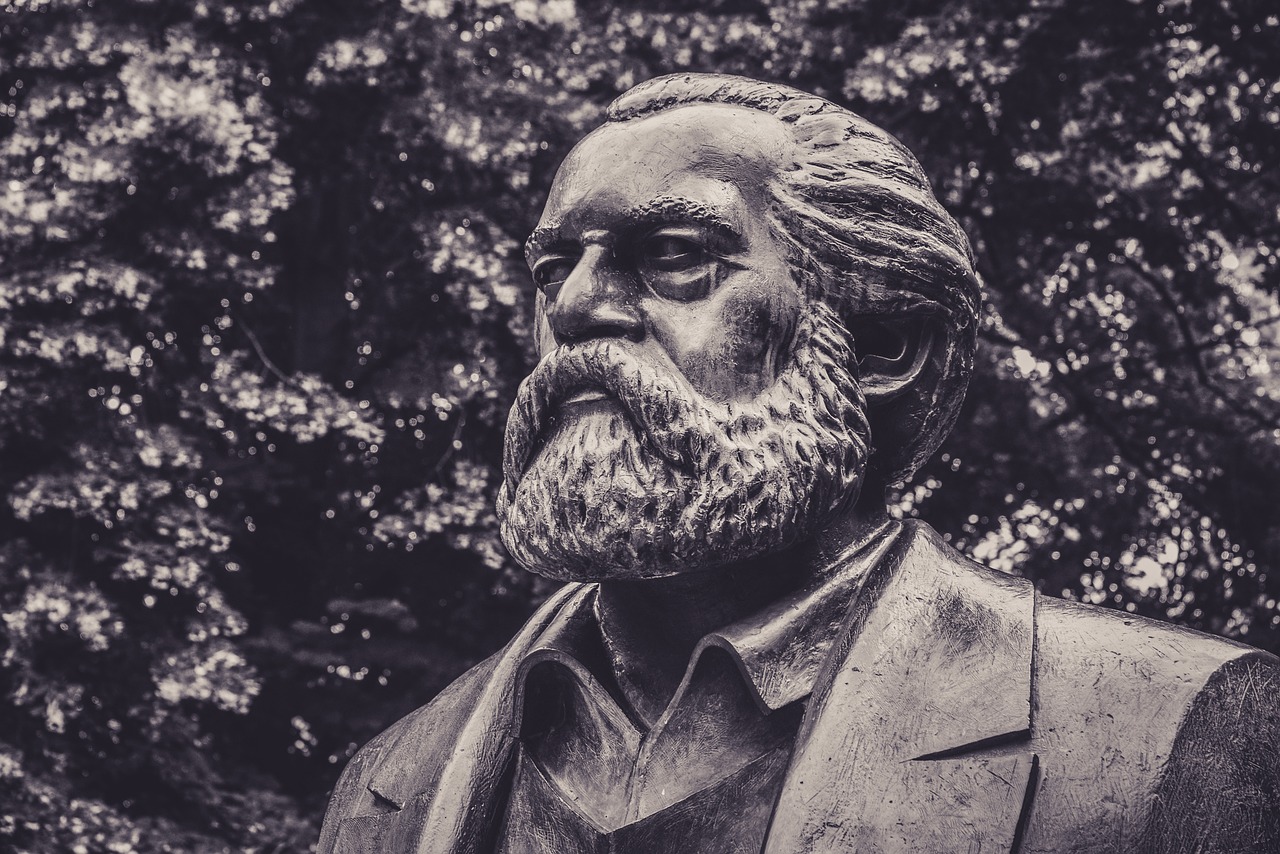
The concept of modes of production is fundamental to understanding how societies organize their economic activities and, consequently, their social structures. At its core, it refers to the different ways in which societies produce goods and services, which encompasses the means of production (like tools, factories, and land) and the relations of production (the relationships between those who own the means of production and those who do not). This framework is crucial for analyzing historical changes because it highlights how shifts in economic practices can lead to transformations in social relations and power dynamics.
To grasp the significance of modes of production, it’s essential to recognize that they are not static; they evolve over time in response to technological advancements, social needs, and environmental conditions. For instance, the transition from feudalism to capitalism marked a significant shift in the modes of production, fundamentally altering the fabric of society. In feudal societies, the economy was primarily agrarian, with a rigid class structure based on land ownership. Conversely, capitalism introduced a market-oriented economy characterized by private ownership of production and wage labor, which in turn reshaped class relations and social dynamics.
Here’s a brief overview of some key modes of production:
| Mode of Production | Characteristics | Social Structure |
|---|---|---|
| Feudalism | Agrarian economy, land-based wealth, serfdom | Rigid class hierarchy: lords, vassals, serfs |
| Capitalism | Market-oriented, private ownership, wage labor | Class division: bourgeoisie (owners) vs. proletariat (workers) |
| Socialism | Collective ownership, planned economy, equitable distribution | Classless society aimed at reducing inequality |
| Communism | Classless, stateless society, communal ownership | No class divisions; communal decision-making |
Understanding these modes of production allows us to see how economic systems influence not only the material conditions of life but also the cultural and ideological frameworks that societies develop. For example, capitalism’s emphasis on competition and individualism has fostered a culture of consumerism, while socialism promotes values of cooperation and community welfare. These ideologies are deeply intertwined with their respective modes of production, demonstrating how economic realities shape societal beliefs and practices.
Furthermore, the analysis of modes of production offers valuable insights into contemporary issues. As globalization continues to reshape economies worldwide, the traditional boundaries of these modes are becoming increasingly blurred. The rise of technology and digital economies, for instance, presents new challenges and opportunities for class relations and labor dynamics. By examining how modes of production evolve, we can better understand the complexities of modern society and the ongoing struggles for equity and justice.
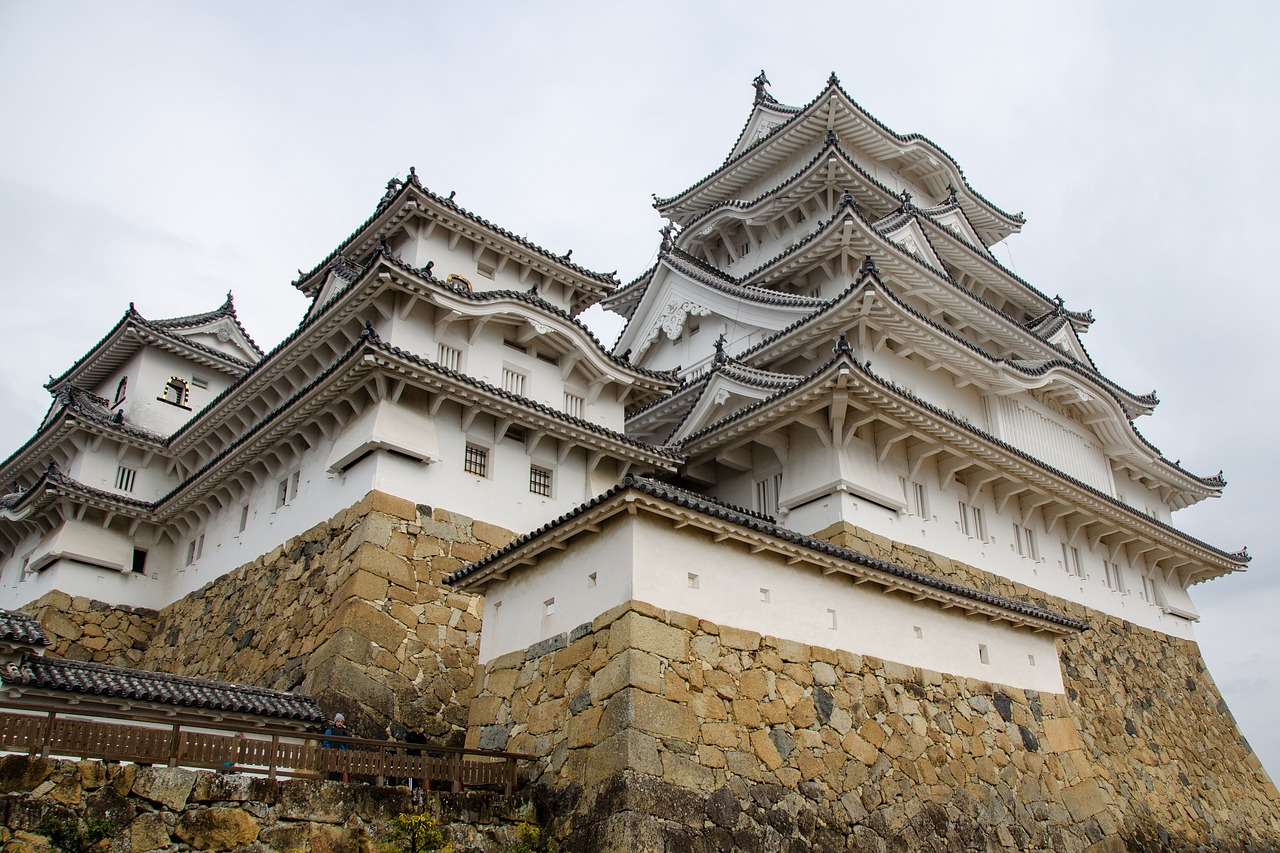
Feudalism and capitalism are two pivotal modes of production that have shaped the course of human history. Understanding these systems is like peering through a lens that reveals the intricate dynamics of social organization and economic relations. Feudalism, which dominated medieval Europe, was characterized by a hierarchical structure where land ownership was the cornerstone of power. Lords owned vast estates and granted parcels of land to vassals in exchange for military service and protection. This system was underpinned by a rigid class structure, where serfs worked the land and were bound to it, often living in conditions that limited their freedom and economic mobility.
On the flip side, capitalism emerged as feudalism waned, fueled by the rise of trade, exploration, and technological advancements. Unlike feudalism, capitalism is defined by private ownership of the means of production and the pursuit of profit. In a capitalist society, individuals and businesses operate in a market economy where supply and demand dictate prices and production. This shift not only transformed economic relations but also altered social dynamics, leading to the emergence of a bourgeois class that challenged the traditional power of the aristocracy.
To illustrate the differences between these two modes of production, consider the following table:
| Aspect | Feudalism | Capitalism |
|---|---|---|
| Ownership | Land owned by lords | Private ownership of property |
| Social Structure | Rigid hierarchy (lords, vassals, serfs) | Fluid class system (bourgeoisie, proletariat) |
| Economic Activity | Agricultural production | Market-driven production |
| Labor | Serfdom and obligation | Wage labor and contract |
The transition from feudalism to capitalism was not merely an economic shift; it was a profound transformation that reshaped societal values and relationships. As communities began to embrace trade and commerce, the feudal bonds that once tied individuals to the land began to loosen. This newfound freedom allowed people to pursue their interests, leading to innovation and the eventual rise of industrial capitalism.
However, this transition was not without its challenges. The rise of capitalism brought about significant social upheaval, as the working class often found themselves exploited in factories under harsh conditions. The struggle between these two systems illustrates the ongoing conflict between different classes and their interests, a theme that remains relevant in our contemporary society.
In summary, feudalism and capitalism represent two distinct yet interconnected modes of production that have profoundly influenced human history. By examining their characteristics and impacts, we can gain a deeper understanding of the forces that have shaped our world. As we delve further into Marx's theories, we will see how these modes of production set the stage for class struggles and the development of ideologies that continue to resonate today.
- What is the main difference between feudalism and capitalism? Feudalism is characterized by land ownership and a rigid class structure, while capitalism emphasizes private ownership and a market-driven economy.
- How did feudalism lead to the rise of capitalism? The decline of feudalism, driven by trade and technological advancements, allowed for the emergence of capitalist practices and the bourgeois class.
- What role does class struggle play in these systems? Class struggle is central to both systems, highlighting the conflicts between different social classes that arise from their economic interests.

Socialism and communism are two political and economic ideologies that emerged as responses to the inequalities and exploitative nature of capitalism. At their core, both concepts advocate for the collective ownership of the means of production, aiming to create a more equitable society. However, they differ significantly in their approaches and ultimate goals.
Socialism is often seen as a transitional phase towards communism. It emphasizes social ownership and democratic control of the means of production, alongside a focus on reducing income inequality and providing universal access to essential services like healthcare and education. In a socialist system, the government may own key industries, but there is still room for private enterprise, allowing for a mixed economy that can adapt to various social needs.
On the other hand, communism represents a more radical departure from capitalism. It envisions a classless society where all property is communally owned, and the state itself eventually withers away. In this idealized version of society, there would be no need for money, as goods and services would be distributed according to need rather than profit. This concept is often encapsulated in the famous phrase, “From each according to his ability, to each according to his needs.”
To understand the distinctions between socialism and communism, consider the following table:
| Aspect | Socialism | Communism |
|---|---|---|
| Ownership | Social ownership with some private enterprise | Common ownership of all property |
| Economic System | Mixed economy | Classless, stateless society |
| Goal | Reduce inequality and provide public services | Establish a classless, moneyless society |
| Role of the State | Active role in managing the economy | State eventually dissolves |
Both socialism and communism have been implemented in various forms around the world, often leading to significant debate regarding their effectiveness and ethical implications. Countries like Cuba and Venezuela have adopted socialist principles, while the former Soviet Union pursued a communist agenda. Each case has provided valuable lessons on the challenges and successes of these ideologies in practice.
In conclusion, while socialism and communism share common roots in their critique of capitalism, they diverge in their methodologies and visions for the future. Understanding these differences is crucial for analyzing their impacts on society and the ongoing discourse about economic systems in the modern world.
- What is the main difference between socialism and communism? Socialism allows for some private ownership and aims to reduce inequality, while communism seeks to eliminate all private ownership and establish a classless society.
- Can socialism exist within a capitalist framework? Yes, many countries employ a mixed economy where socialist policies coexist with capitalist elements.
- Are there successful examples of socialism? Countries like Sweden and Norway implement socialist policies such as universal healthcare and education, demonstrating a successful blend of socialism and capitalism.

The concept of class struggle lies at the heart of Marx's historical materialism, acting as a powerful engine that drives historical change. At its core, class struggle refers to the ongoing conflict between different social classes, primarily the bourgeoisie (the ruling class) and the proletariat (the working class). This conflict is not just a historical footnote; it is a dynamic process that shapes societies and influences the course of history. Imagine a tug-of-war where each side pulls with all their might—this is how class struggle operates within the fabric of society.
Marx argued that every society is characterized by its own unique class relations, which evolve as the modes of production change. For instance, during the feudal era, the struggle was largely between the lords and serfs, while the rise of capitalism shifted the focus to the confrontation between capitalists and workers. This transition illustrates how the economic base of society influences its superstructure, including politics, culture, and ideology.
To further understand class struggle, we can break it down into several key components:
- Economic Inequality: The disparity between the wealthy and the poor is a fundamental aspect of class struggle. As wealth accumulates in the hands of a few, the majority may find themselves marginalized and oppressed.
- Political Power: Those who control the means of production often wield significant political power, shaping laws and policies to maintain their dominance. This creates a cycle where the interests of the ruling class are prioritized over those of the working class.
- Social Consciousness: Class struggle also influences how individuals perceive their place in society. Awareness of class disparities can lead to collective action and social movements aimed at challenging the status quo.
Historically, class struggle has manifested in various forms, from peaceful protests to violent revolutions. The French Revolution and the Russian Revolution serve as prime examples of how class tensions can erupt into significant societal upheaval. In these cases, the oppressed masses rose against their oppressors, seeking to dismantle existing power structures and establish a new order.
Today, class struggle continues to play a crucial role in contemporary society. Issues such as wage stagnation, labor rights, and economic inequality fuel ongoing conflicts between different classes. Social movements advocating for workers' rights and economic justice are modern manifestations of this age-old struggle. The #MeToo movement, for example, not only addresses gender inequality but also intersects with class issues, highlighting how marginalized groups often face compounded oppression.
In essence, class struggle is not merely a historical concept; it is a living, breathing phenomenon that informs our understanding of societal dynamics. As we navigate the complexities of modern life, recognizing the role of class struggle can empower individuals and communities to advocate for change and challenge the systems that perpetuate inequality.
- What is class struggle? Class struggle refers to the conflict between different social classes, primarily driven by economic inequalities and power dynamics.
- How does class struggle influence history? Class struggle shapes historical events and societal changes, often leading to revolutions and social movements that challenge existing power structures.
- Is class struggle still relevant today? Yes, class struggle remains highly relevant as issues of economic disparity and social injustice continue to affect communities worldwide.
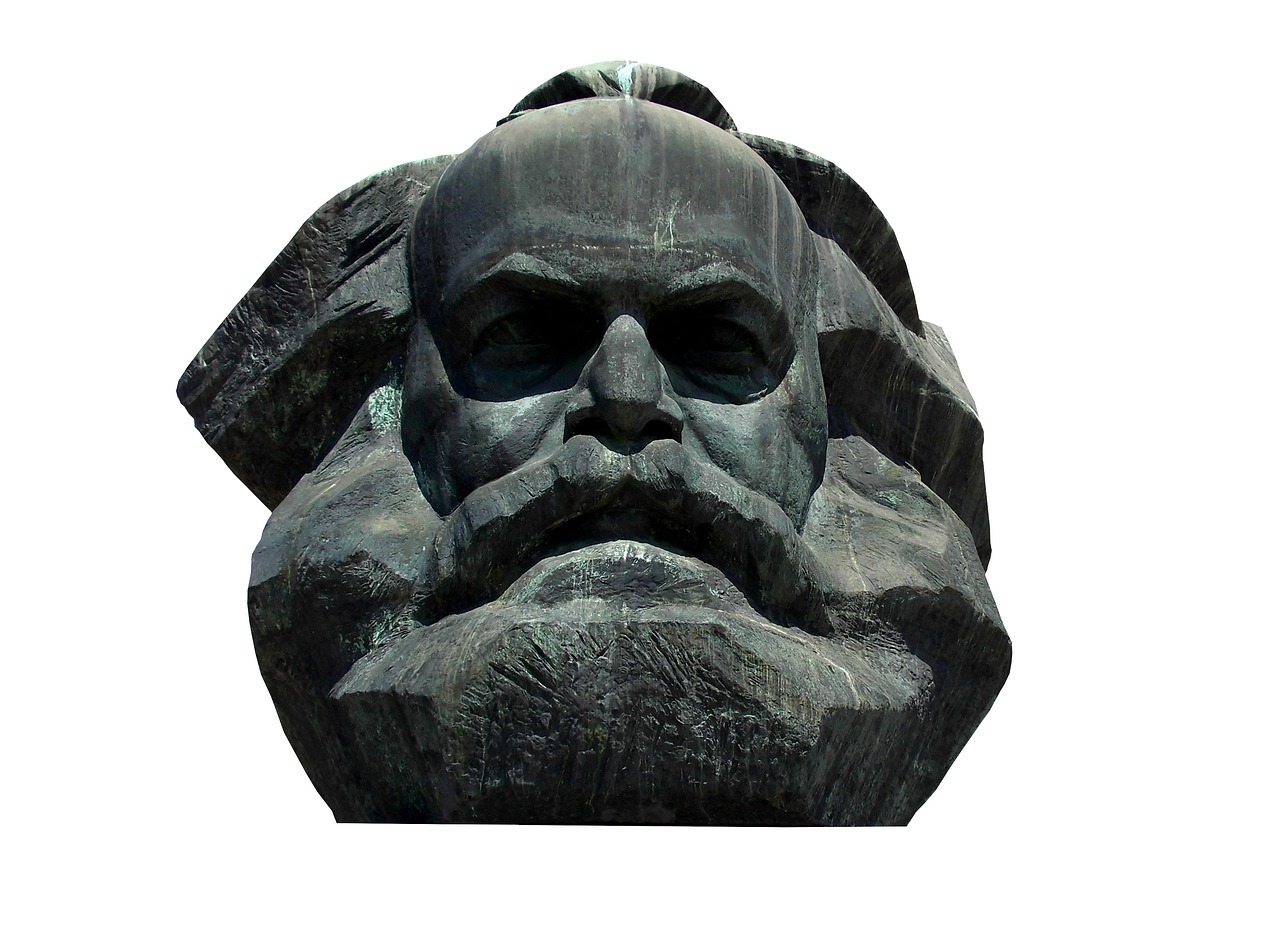
In the grand tapestry of human history, ideology is the thread that weaves together our beliefs, values, and perceptions of the world. It serves as a lens through which we interpret our experiences and navigate our social realities. Marx's historical materialism posits that ideology is not merely a collection of ideas floating in the ether; rather, it is deeply embedded in the material conditions of society. This means that our thoughts and beliefs are significantly shaped by the economic and social structures around us. But how exactly does this work?
To understand the role of ideology in historical materialism, one must first recognize that it functions as a powerful tool of social cohesion and control. Ideologies justify the status quo, often presenting existing power structures as natural or inevitable. For instance, consider how certain ideologies have historically portrayed capitalism as the pinnacle of human achievement, masking its exploitative nature. This is where the concept of Ideological State Apparatuses (ISAs) comes into play. These are institutions like education, religion, and media that propagate dominant ideologies, shaping public consciousness and reinforcing class divisions.
ISAs operate subtly, often without individuals even realizing their influence. For example, the education system not only imparts knowledge but also instills values that align with the interests of the ruling class. It teaches obedience, punctuality, and competition—traits that serve capitalism well. Similarly, media outlets often present narratives that favor the elite, framing issues in a way that distracts from systemic inequalities. This creates a cycle where the oppressed remain unaware of their exploitation, believing instead in the meritocratic myths that society promotes.
However, ideology is not static; it can be contested and transformed. Critical perspectives on ideology highlight the potential for revolutionary movements to challenge dominant narratives. These movements often arise from the realization that the prevailing ideology does not serve the interests of the majority. They seek to unmask the underlying power dynamics and propose alternative visions of society. By doing so, they can disrupt the ideological status quo and pave the way for new social arrangements.
To illustrate this point, consider the following table that outlines how different social movements have historically challenged dominant ideologies:
| Movement | Dominant Ideology Challenged | Outcome |
|---|---|---|
| Labor Movement | Capitalism as a fair system | Labor rights and regulations |
| Civil Rights Movement | Racial superiority | Legislation against discrimination |
| Feminist Movement | Patriarchy | Gender equality advancements |
In conclusion, ideology plays a pivotal role in shaping societal structures and individual consciousness within the framework of historical materialism. It can serve as both a tool of oppression and a catalyst for change. By critically examining the ideologies that dominate our lives, we can begin to understand the material conditions that give rise to them and, ultimately, work towards a more equitable society.
- What is historical materialism?
Historical materialism is a Marxist framework that emphasizes the role of material conditions in shaping societal development and historical change. - How does ideology influence society?
Ideology influences society by shaping people's beliefs and values, often justifying existing power structures and social inequalities. - What are Ideological State Apparatuses?
ISAs are institutions such as education, media, and religion that perpetuate dominant ideologies and reinforce class divisions. - Can ideology be changed?
Yes, ideology can be contested and transformed through social movements and critical discourse that challenge the status quo.
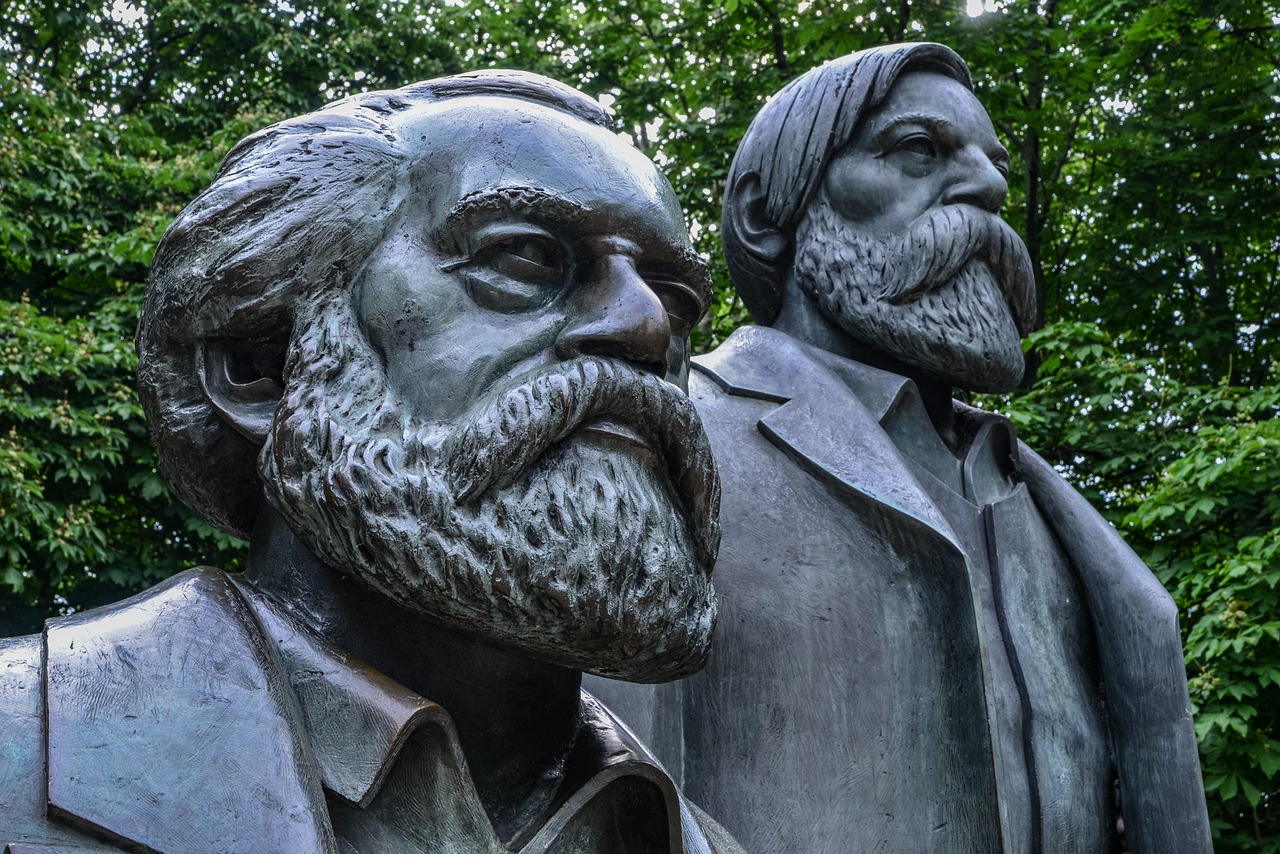
When we talk about ideological state apparatuses, we're diving into one of the most fascinating aspects of Marx's historical materialism. These are the institutions and structures that help propagate the dominant ideology in a society, influencing how people think and behave. Think of them as the invisible threads that weave the fabric of social consciousness, shaping our beliefs and values without us even realizing it. They include various entities such as education systems, media outlets, religious institutions, and even family structures.
Education, for example, serves as a key ideological state apparatus. It doesn’t just impart knowledge; it also instills the values and norms of the prevailing society. From a young age, children are taught to respect authority and conform to societal expectations, which can often stifle critical thinking. This educational indoctrination creates a generation that is less likely to question the status quo. In this way, schools become a breeding ground for the dominant ideology, subtly reinforcing class structures and inequalities.
Similarly, the media plays a crucial role in shaping public perception. It acts as a gatekeeper of information, determining what narratives are amplified and which ones are marginalized. The portrayal of social issues, economic policies, and political movements can significantly influence public opinion. For instance, if the media continuously highlights the success stories of capitalism while downplaying its failures, it fosters a belief in the system's legitimacy, making it harder for alternative ideologies to gain traction.
To illustrate the impact of these ideological state apparatuses, consider the following table that outlines their functions and examples:
| Ideological State Apparatus | Function | Example |
|---|---|---|
| Education | Instills societal norms and values | Public schools teaching respect for authority |
| Media | Shapes public perception and discourse | News outlets focusing on capitalist success stories |
| Religion | Provides moral justification for social structures | Religious teachings that promote acceptance of inequality |
| Family | Transmits cultural values across generations | Parental expectations about career success |
These ideological state apparatuses work together to maintain the existing power dynamics in society. They create a sense of normalcy around social inequalities, making them seem natural or inevitable. But what happens when these ideologies are challenged? Revolutionary movements often arise as a response to the limitations and injustices perpetuated by these structures. Activists and thinkers can expose the underlying ideologies, urging society to reconsider what is deemed acceptable or normal.
In conclusion, understanding ideological state apparatuses is crucial for anyone interested in the mechanics of power and social change. By recognizing how these institutions shape our beliefs and values, we can become more critical consumers of information and more aware of the forces that influence our lives. This awareness can empower us to challenge the status quo and advocate for a more equitable society.
- What are ideological state apparatuses? Ideological state apparatuses are institutions that propagate the dominant ideology in society, influencing people's beliefs and behaviors.
- How do education systems function as ideological state apparatuses? Education systems instill societal norms and values, shaping how individuals perceive authority and conformity.
- Can ideological state apparatuses be challenged? Yes, revolutionary movements and critical thinkers can expose and challenge the ideologies perpetuated by these structures.

When we delve into critical perspectives on ideology, we uncover a fascinating landscape of thought that challenges the status quo. Ideology, in its essence, is not just a collection of beliefs; it serves as a lens through which we interpret the world. But what happens when that lens is clouded by dominant narratives that serve the interests of a select few? This is where critical theory comes into play, offering a robust framework for questioning and dismantling these prevailing ideologies.
One of the key ideas in critical perspectives is the notion that ideologies are not merely reflective of reality but actively shape it. They create a social consciousness that can either empower or oppress. For instance, consider how education systems often promote certain ideologies while marginalizing others. This selective teaching can lead to a homogenized view of history and society, which in turn maintains existing power structures. So, how do we break free from this cycle?
To challenge dominant ideologies, critical theorists advocate for a process of reflection and critique. This means not just accepting information at face value but actively questioning the sources and motivations behind it. It’s about peeling back the layers of social constructs to reveal the underlying power dynamics. For example, media representation plays a crucial role in shaping public perception. When certain groups are consistently portrayed in a negative light, it reinforces stereotypes and justifies systemic inequalities.
Moreover, in the realm of ideology, the concept of counter-hegemony emerges as a powerful tool. Counter-hegemonic movements seek to challenge and replace dominant ideologies with alternative perspectives. These movements can take many forms, from grassroots activism to artistic expression. They often highlight issues that mainstream narratives overlook, creating a more inclusive dialogue about societal values and priorities.
In this context, it’s essential to recognize the role of revolutionary movements in transforming ideology. History is replete with examples where collective action has led to significant shifts in societal beliefs. The civil rights movement, for instance, not only challenged racial inequality but also redefined the ideological landscape regarding justice and equality. Such movements remind us that ideology is not static; it evolves through struggle and resistance.
Ultimately, critical perspectives on ideology encourage us to engage in a continuous process of questioning and re-evaluation. This journey is not just an academic exercise; it’s a vital part of creating a more just and equitable society. By understanding how ideologies function and recognizing their impact on our lives, we can begin to envision a world where diverse voices and experiences are acknowledged and valued.
- What is ideology? Ideology refers to a system of beliefs and values that shapes how individuals and societies understand the world.
- How does ideology affect society? Ideology influences social norms, policies, and power dynamics, often reinforcing existing inequalities.
- What is counter-hegemony? Counter-hegemony refers to movements that challenge and seek to change dominant ideologies.
- Why is critical theory important? Critical theory provides tools for questioning and dismantling oppressive ideologies, promoting social justice.

Marx's historical materialism is not just a relic of the past; it resonates deeply within the fabric of contemporary society. In a world where economic disparities grow wider and social injustices become more pronounced, understanding the dynamics of historical materialism can provide critical insights into our current struggles. But how exactly does this theory apply to today's issues? It helps us dissect the underlying forces that shape our world, particularly in terms of class relations and economic systems.
One of the most striking aspects of historical materialism is its ability to clarify the interconnectedness of economic structures and social relations. For instance, consider the phenomenon of globalization. While it promises a more interconnected world, it also raises questions about class dynamics on a global scale. Wealth and power are increasingly concentrated in the hands of a few, while many are left grappling with the consequences of economic policies that seem to favor the elite. Historical materialism urges us to look beyond the surface and understand these shifts as part of a larger historical process.
Furthermore, social movements today often echo the principles of historical materialism. They arise as responses to the inequalities perpetuated by existing power structures. For example, movements advocating for workers' rights, environmental justice, and racial equality can be analyzed through the lens of class struggle. These movements are not just about individual grievances; they reflect a collective push against the material conditions that sustain oppression. By examining these struggles through a historical materialist perspective, we can better appreciate their significance and the potential for transformative change.
To illustrate this point, let’s consider the following table that outlines key social movements and their historical materialist implications:
| Social Movement | Core Issues | Historical Materialist Implications |
|---|---|---|
| Labor Movement | Workers' rights, fair wages | Challenges capitalist exploitation and seeks equitable distribution of resources. |
| Environmental Movement | Climate change, sustainability | Critiques capitalist production methods that harm the environment, advocating for systemic change. |
| Black Lives Matter | Racial equality, police brutality | Highlights the intersection of race and class, seeking to dismantle systemic oppression. |
In conclusion, the relevance of Marx's historical materialism in contemporary society cannot be overstated. It provides a framework for understanding the complexities of our world, from the impacts of globalization on class dynamics to the motivations behind social movements. By applying this lens, we can better navigate the challenges we face and work towards a more equitable future.
- What is historical materialism? Historical materialism is a theory developed by Karl Marx that emphasizes the role of material conditions in shaping societal development and historical change.
- How does historical materialism relate to class struggle? Class struggle is a central concept in historical materialism, highlighting the conflicts between different social classes as a driving force of historical change.
- Why is historical materialism relevant today? It helps us understand current social issues, economic disparities, and the dynamics of power in contemporary society.
- Can historical materialism inform social movements? Yes, it provides a framework for analyzing the motivations and implications of social movements that challenge existing power structures.

Globalization has fundamentally transformed the landscape of class dynamics, reshaping how societies interact and organize economically. As we dive into this topic, it’s essential to recognize that globalization is not just about the exchange of goods; it’s a complex web of cultural, political, and economic interconnections that can significantly alter class structures. Imagine a giant spider web, where each strand represents a different aspect of society, and the more connections that are made, the more intricate and sometimes unstable the web becomes.
At the heart of this transformation is the shift in modes of production. Historically, societies were defined by local economies, but with globalization, we see a movement towards a global economy that transcends national borders. This shift has led to the emergence of multinational corporations that wield immense power, often overshadowing local businesses and labor forces. As a result, traditional class structures are being challenged, and new class divisions are emerging. For instance, the rise of a global working class is juxtaposed against the elite class of corporate executives and shareholders, creating a stark divide that can lead to social unrest.
Furthermore, the implications of globalization extend beyond mere economic changes; they also influence social relations and cultural identities. In many cases, globalization has led to the exploitation of labor in developing countries, where workers endure poor conditions and low wages, all while producing goods for wealthier nations. This exploitation is a direct result of the capitalist drive for profit maximization, which often prioritizes cost-cutting over ethical labor practices.
To illustrate the impact of globalization on class dynamics, consider the following table:
| Aspect | Local Economy | Global Economy |
|---|---|---|
| Production | Localized | Globalized |
| Labor Relations | Community-focused | Exploitation risk |
| Class Structure | Stable | Fluid and dynamic |
| Wealth Distribution | More equitable | Increasing inequality |
This table highlights the contrasting aspects of local and global economies, emphasizing how globalization can lead to increased inequality and instability within class structures. The rise of digital platforms and remote work has also contributed to these dynamics, creating new opportunities for some while leaving others behind in the dust.
Moreover, the concept of cultural imperialism plays a significant role in the globalization narrative. As Western ideals and practices permeate other cultures, local traditions and identities can become diluted, leading to a homogenization of culture. This phenomenon often exacerbates class tensions, as those who are able to adapt to the global culture may find themselves at an advantage, while others struggle to maintain their cultural identities and economic stability.
In conclusion, the interplay between globalization and class dynamics is a double-edged sword. While it offers opportunities for economic growth and cultural exchange, it also poses significant challenges that can deepen existing inequalities and create new class divisions. Understanding these dynamics through the lens of Marx's historical materialism allows us to critically analyze the ongoing changes in our world and recognize the importance of advocating for a more equitable global society.
- What is globalization? Globalization refers to the process of increased interconnectedness and interdependence among countries, primarily in terms of economic, cultural, and political exchanges.
- How does globalization impact class dynamics? Globalization can exacerbate inequalities by creating a divide between a global elite and a marginalized working class, often leading to exploitation and social unrest.
- What role does historical materialism play in understanding globalization? Historical materialism provides a framework for analyzing how material conditions and economic structures influence societal development, including the effects of globalization on class relations.

Social movements have always been a powerful force for change, acting as catalysts that challenge the status quo and demand justice. When we examine these movements through the lens of historical materialism, we uncover a deeper understanding of their motivations and implications. At the heart of this analysis lies the recognition that social movements often emerge from the material conditions of society, shaped by economic structures and class relations. In essence, these movements are not merely spontaneous bursts of activism; they are deeply rooted in the historical context of class struggle.
Take, for example, the civil rights movement in the United States during the 1960s. This movement was not just about racial equality; it was also a response to the economic conditions faced by African Americans, who were largely marginalized and economically disadvantaged. By applying the principles of historical materialism, we can see how the fight for civil rights was intertwined with the struggle against economic exploitation. The movement sought not only to dismantle systemic racism but also to address the material inequalities that perpetuated it.
Another significant example is the labor movement, which has played a crucial role in advocating for workers' rights and better working conditions. Historical materialism helps us understand that the labor movement arose from the capitalist mode of production, where workers were often exploited for their labor. As workers began to organize, they recognized that their struggles were not isolated incidents but part of a larger class struggle against the capitalist class. This realization fueled their activism and led to significant changes in labor laws and workers' rights.
Moreover, social movements today continue to reflect the principles of historical materialism. The global climate movement, for instance, highlights the intersection of environmental issues with economic structures. Activists argue that the capitalist system, with its relentless pursuit of profit, is a primary driver of environmental degradation. By framing climate change as not just an environmental issue but a social and economic one, these movements are challenging the dominant ideologies that prioritize profit over people and planet.
In analyzing these movements, we can identify several key aspects that illustrate their connection to historical materialism:
- Class Dynamics: Social movements often arise from the experiences and struggles of specific classes or groups within society.
- Material Conditions: The economic and social realities faced by individuals and communities play a crucial role in shaping their motivations for activism.
- Ideological Challenges: Movements frequently challenge dominant ideologies that justify existing power structures and inequalities.
Ultimately, social movements serve as a reminder that history is not a linear progression but a complex interplay of forces, shaped by material conditions and class struggles. By understanding these movements through the framework of historical materialism, we can appreciate their significance in challenging existing power structures and advocating for a more equitable society. As we move forward, the lessons learned from past and present social movements will continue to inform our understanding of social change and the ongoing struggle for justice.
- What is historical materialism? Historical materialism is a philosophical approach that emphasizes the role of material conditions and economic factors in shaping societal development and historical change.
- How do social movements relate to historical materialism? Social movements are often driven by the material conditions of society and reflect the struggles of different social classes, highlighting the interplay between economic structures and activism.
- Can you give examples of social movements that embody historical materialism? Yes, examples include the civil rights movement, the labor movement, and the global climate movement, all of which address economic and social inequalities.
Frequently Asked Questions
- What is historical materialism?
Historical materialism is a theoretical framework developed by Karl Marx that posits that material conditions—such as economic factors and modes of production—are the primary influences on societal development and historical change. It contrasts with idealist perspectives that emphasize ideas and consciousness as the driving forces of history.
- How do modes of production affect society?
Modes of production refer to the various ways in which societies organize their economic activities, such as feudalism, capitalism, socialism, and communism. Each mode of production shapes social structures, class relations, and the distribution of power, ultimately influencing how societies evolve over time.
- What role does class struggle play in historical materialism?
Class struggle is a central concept in Marx's theory, emphasizing the conflict between different social classes, particularly between the ruling and the working classes. This struggle is seen as a driving force behind historical change, as it leads to social transformations and the reorganization of societal structures.
- How does ideology influence societal development?
Ideology shapes people's beliefs, values, and consciousness, often justifying existing social structures and power relations. In historical materialism, dominant ideologies are maintained through institutions like education and media, which perpetuate class power and influence how society perceives itself and its challenges.
- Why is Marx's historical materialism relevant today?
Marx's historical materialism remains relevant as it provides insights into contemporary social issues, such as economic inequality, class dynamics, and the effects of globalization. By analyzing these issues through the lens of historical materialism, we can better understand the underlying causes of societal problems and the potential for social change.
- What is the significance of social movements in the context of historical materialism?
Social movements often reflect the principles of historical materialism by challenging existing power structures and advocating for social change. They can be seen as expressions of class struggle, as they seek to address the inequalities and injustices rooted in the material conditions of society.

